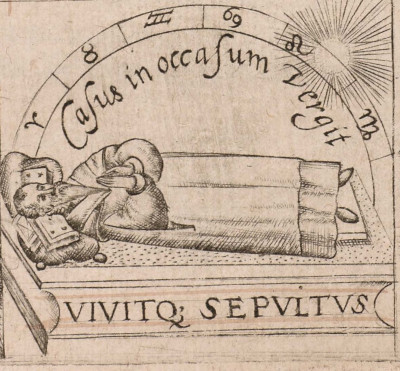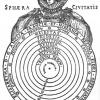Lapis Philosophicus
External links
Commentary
PRESCRIBED SOURCE
Frontispiece: John Case, Lapis Philosophicus Seu Commentarius in 8 Lib: Phys: Aristot: In Quo Arcana Physiologiæ examinantur. Oxford: printed by Joseph Barnes, 1599.
Source: Bodleian Library shelfmark 4° C 1(1) Art.
Latin Digital edition on EEBO (you must signed in through your SSO)
Translated prescribed parts on Canvas.
Literature. S. K. Heninger, Touches of Sweet Harmony: Pythagorean Cosmology and Renaissance Poetics (San Marino, CA, 1974), 217-20.
Charles B. Schmitt, John Case and Aristotelianism in Renaissance England (Kingston, Ont. and Montreal, 1983), Appendix VI: 'The Title Page of the Lapis Philosophicus', pp. 253-4. Available online on ProQuest with your Oxford account.
Latin Motto. "Casus in occasum vergit vivitque sepultus"
Lapis Philosophicus cover Motto1.jpg

According to Heninger, 217, this could be translated as "Like the course of the sun, the life of man comes to a close; but being entombed, he lives." Schmitt, 254 remarks that "Casus" also reads like Case's Latin name and reads this as "John Case has come to his death, but entombed he [still] lives." It is probable that Case died before this book was published.
Student project: Summarize the observations of Heninger and Schmitt, as enhanced through comparison with the St John's College portrait and funerary monument.



